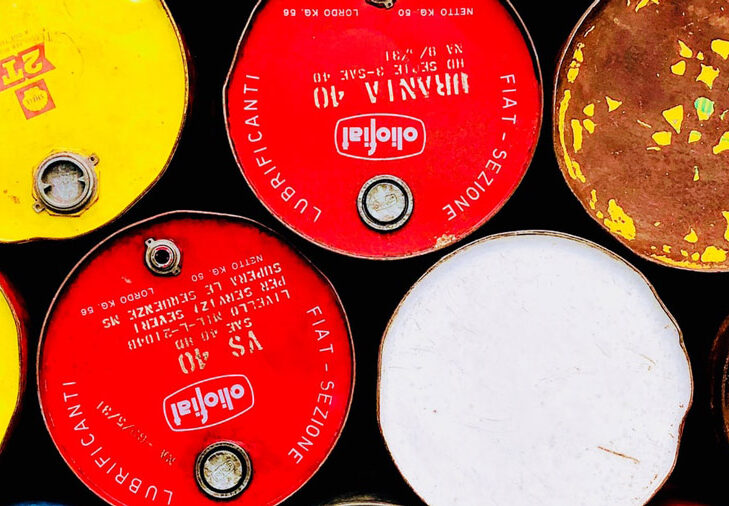
India the only major economy yet to adopt GHS
Version eight of the Globally Harmonized System of Classification and Labelling of Chemicals (GHS) was published in July 2019. The internationally agreed-upon standards, managed by the United Nations, provide guidelines to promote the safe production, transportation, use and disposal of hazardous chemicals. Safety measures include standardised hazard testing criteria, universal warning pictograms, and harmonized safety data sheets (SDS).
 Development of the GHS began at the Rio Conference on Environment and Development by the United Nations, dubbed the “Earth Summit,” in Rio de Janeiro, Brazil, in 1992. The goal was to streamline a diverse array of worldwide chemical labelling schemes through a common infrastructure. The most recent revisions to GHS include a new hazard category “chemicals under pressure,” identified as solids or liquids pressurised with a gas at 200kPa (gauge) or more at 20°C. The update contains changes to the classification criteria for aerosols, now categorised based on three criteria – their flammable properties, the heat of combustion, and the test results from flammability and ignition testing.
Development of the GHS began at the Rio Conference on Environment and Development by the United Nations, dubbed the “Earth Summit,” in Rio de Janeiro, Brazil, in 1992. The goal was to streamline a diverse array of worldwide chemical labelling schemes through a common infrastructure. The most recent revisions to GHS include a new hazard category “chemicals under pressure,” identified as solids or liquids pressurised with a gas at 200kPa (gauge) or more at 20°C. The update contains changes to the classification criteria for aerosols, now categorised based on three criteria – their flammable properties, the heat of combustion, and the test results from flammability and ignition testing.
The eighth edition of the purple book also includes solutions to common problems with set or kit labelling, precautionary pictograms to “keep out of reach of children,” revisions to the skin corrosion/irritation classification and an altered annex on factors leading to dust explosion hazards.
While the GHS is not legally binding, the classification system has achieved broad global adoption, with an estimated 65 countries implementing the scheme as of 2017. However, the implementation level varies in different regions. A building block approach allows countries to pick and choose the elements of GHS they wish to incorporate into their regulations — lowering the barrier to adoption, improving compliance and reducing cost.
The major benefit of GHS is its widespread application. Though, not all countries have embraced the system. India, the world’s second-most populous country and seventh-largest economy, “is the only major economy body in the world that has not implemented GHS classification and labelling for chemicals yet,” says Miljan Minic. Minic is a regulatory analyst at Chemical Watch, a company that provides independent intelligence and insight for product safety professionals that manage chemicals. Minic provided an industry update on the status and upcoming changes to GHS in the Asia Pacific and the Middle East regions in a March 2020 webinar.
 India is making progress on the acceptance of GHS. A final draft of India’s national rules for chemical management was shared in February 2020. The draft included recommendations on the development of an inventory registration scheme for chemicals and outlined plans for GHS adoption. Timings for implementation are yet to be defined.
India is making progress on the acceptance of GHS. A final draft of India’s national rules for chemical management was shared in February 2020. The draft included recommendations on the development of an inventory registration scheme for chemicals and outlined plans for GHS adoption. Timings for implementation are yet to be defined.
The Gulf states of Bahrain, Kuwait, Oman, Saudi Arabia, Qatar, and the United Arab Emirates are all yet to adopt GHS, and there is no consistent system for classification and labelling of chemicals in the region, says Minic. Though, many large companies voluntarily comply with GHS to satisfy their international trade partners. In October 2019, the Gulf Cooperation Council Standards organisation (GSO) published a draft regulation on adopting the 5th revision of the GHS classification labelling and SDS, which was sent to member countries for approval on 16 March 2020. It is anticipated the draft will be adopted as a technical regulation at the meeting of national standards bodies on 6 November 2020, says Minic. A further two to three years may be required to transpose it into domestic regulation in member countries.
Also, Saudi Arabia is expected to issue a national chemical safety program by mid-2020 as it endeavours to strengthen chemical management laws and enable better data collection on chemical usage.
China has adopted the fourth revision of the GHS. Moves are underway that will see them implement the seventh revision, including the hazard class for explosives, says Minic. The Ministry of Industry and Information Technology’s (MIIT) consultation process was due to end on 5 April 2020, though, all regulatory timings are no doubt at risk with the COVID-19 pandemic that is sweeping the globe.
Australia too, is working towards integrating the seventh revision of GHS into its work health and safety laws, says Minic. 1 July 2020 is the scheduled date for legal adoption. Importers and manufacturers will be permitted a two-year transition period, whereas suppliers and users can continue to adhere to the present third revision until current stocks are exhausted. The timing for legal adoption also coincides with Australia’s transition to a new chemical regulatory framework, says Minic. The framework is designed to allow chemicals into the market more swiftly.
 Malaysia is also currently following the third revision of GHS and has confirmed plans to adopt version seven in the future. Amendments to its industry code of practice on chemicals classification and hazard communication were completed last year, and industry has been permitted until 11 June 2020 to update labels and safety data sheets to ensure compliance with the classification.
Malaysia is also currently following the third revision of GHS and has confirmed plans to adopt version seven in the future. Amendments to its industry code of practice on chemicals classification and hazard communication were completed last year, and industry has been permitted until 11 June 2020 to update labels and safety data sheets to ensure compliance with the classification.
In May 2019, Japan published updated national standards on chemical classifications and labelling and SDS. Companies have been permitted until 24 May 2022 to conform with the revised GHS six standards. In the meantime, companies can comply with the pre-existing fourth revision, says Minic. In Israel, a three-year transition period has been permitted for companies to transition to the sixth GHS revision, which was published on 10 August 2019.
New Zealand officially claims alignment with revision five of GHS, despite their classifications having many similarities with the sixth and seventh versions, says Minic. A consultation document published in October 2019 foreshadows a shift to revision seven, with the public consultation on the proposals concluding on 9 January 2020. The final document is yet to be released, though Minic expects changes to be implemented in April 2021 with a two-year transitional period.
It is anticipated that Singapore will issue a public consultation on GHS revisions later in 2020. There is uncertainty over whether the Singapore chemical industry council will mirror New Zealand and Australia in shifting to the seventh revision, or Japan at revision six.







